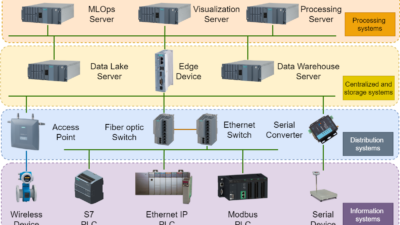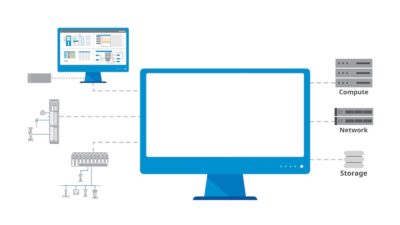Tutorial: Oscilloscopes are probably the most useful, and most used general-purpose electronic test instruments. In the hands of a knowledgeable test engineer, an oscilloscope can substitute for anything from a digital multimeter to a spectrum analyzer and perform measurements that are impossible for any other instrument. Here's how oscilloscopes work.
Oscilloscopes are probably the most useful, and most used general-purpose electronic test instruments. In the hands of a knowledgeable test engineer, an oscilloscope can substitute for anything from a digital multimeter to a spectrum analyzer while easily performing measurements that are impossible for any other instrument. Couple an oscilloscope with a signal generator, and it is possible to measure virtually any electronic property of any electronic circuit within the circuit’s frequency bandwidth.
| 10X scope probes provide imiproved measurement performance and safety. |
While the scope has all this measurement flexibility, the information it provides is only as good as the signal reaching its input. The quality of that signal depends on how the signal gets from the unit under test (UUT) to the scope input. While it is possible to simply stick one end of a wire into the scope input connector and clip the other end to a test point on the UUT, such informal procedures usually end in tears. Professional test engineers use test probes and, more often than not, use passive 10X oscilloscope probes more than anything else, as they are widely recognized as being the best bet for protecting the integrity of their measurements, their test equipment, and their skins. To understand why, it’s important to know how these probes work.
Oscilloscopes are voltage-measuring machines. As such, they have high input impedances to minimize loading of the circuit being measured. Typical scope input impedances are on the order of 1 megohm. It’s a nice value that is high enough to minimize loading of most circuits and low enough to avoid strange amplifier-noise effects.
A 10X scope probe takes advantage of this high-but-not-too-high scope input impedance to further reduce UUT loading while protecting the scope from overvoltages. We call this “decoupling.” Decoupling, in measurement circles, means reducing effects that the UUT and instrument have on each other.
The scope probe puts a resistive impedance in series with the scope’s input. This sets up a voltage divider where the UUT signal falls across the sum of the probe and input impedances, while the scope input sees only the voltage across its impedance. To achieve the 10X ratio, the added resistance must be exactly nine times the scope’s input-impedance value.
What this does for the UUT is to reduce the load current the measurement sucks out of the test point by a factor of 10. Measurement loading is one of the most important contributors to measurement error. It is especially important as the effective impedance at the test point is often poorly known, so calculating the loading effect is difficult. Therefore, reducing that effect by an order of magnitude is generally a good idea.
The 10X probe’s effect on the scope is two-fold: reducing the signal strength is negative, but generally not terribly bad; while reducing maximum voltage excursions is a big positive.
Reducing signal strength is not bad because oscilloscopes, in general, and modern digital oscilloscopes in particular, have powerful adjustable-gain voltage amplifiers. Except for the smallest signal levels, compensating for the reduced signal level is simply a matter of increasing the amplifier gain by a factor of 10. This typically represents two scale ranges. In fact, some oscilloscopes automatically boost their amplifier gains when a 10X probe is plugged in. Only when the required range is near the bottom of the scope’s dynamic range (when amplifier gain is near its maximum) does this effect become important.
Reducing maximum voltage excursions is a big positive because it extends the scope’s maximum safe operating range. Maximum safe voltage ratings for most scopes are a few hundred volts. UUT operating voltages can easily reach several times that.
It is, frankly, expensive to incorporate insulation for those higher voltages. Simply adding a 10X passive probe is cheap insurance that boosts the safe input voltage (to protect the oscilloscope–not the operator) to a few thousands of volts. That’s because it’s a lot better to accidentally fry a probe costing $50-$100 than to fry a scope costing hundreds or thousands of times more. (Of course, you still have to keep your fingers out of the high-voltage circuit, though. The probe won’t protect you.)
For more details (and larger diagram), see: How do 10X oscilloscope probes work?
Also read: DC measurements: voltage vs. current ;



